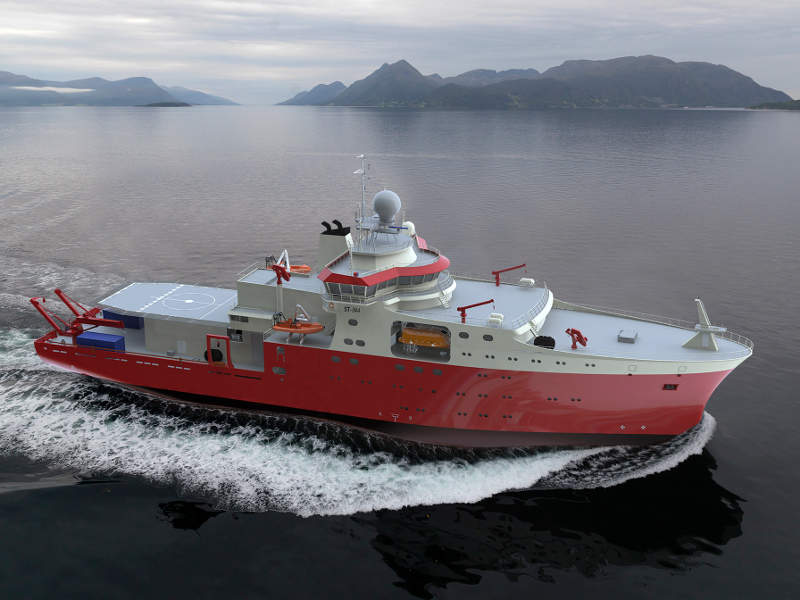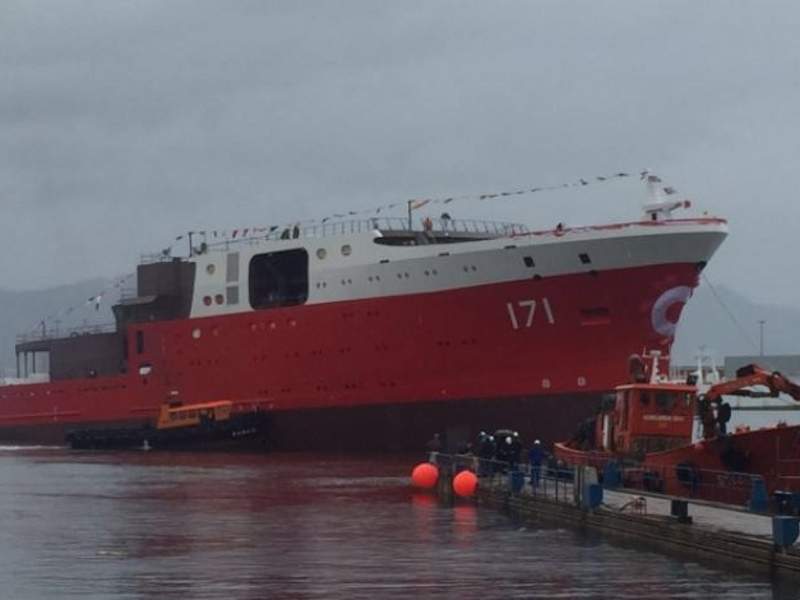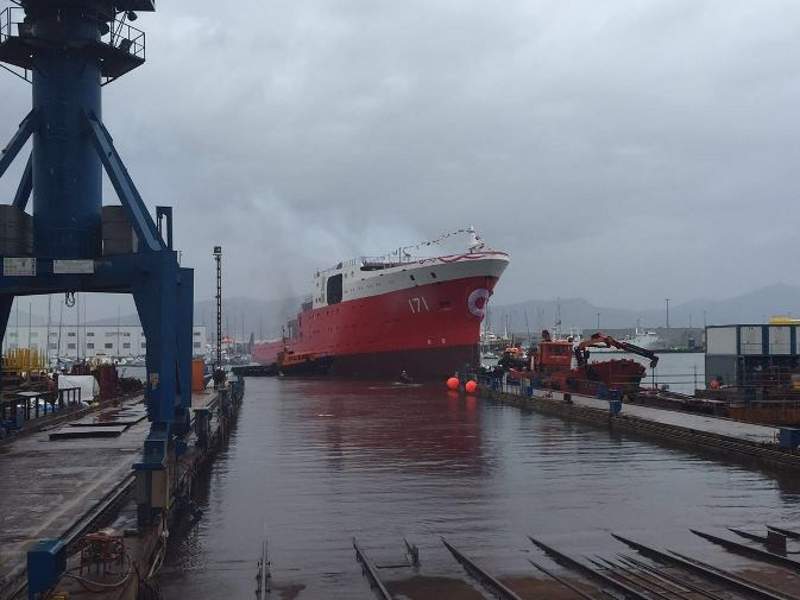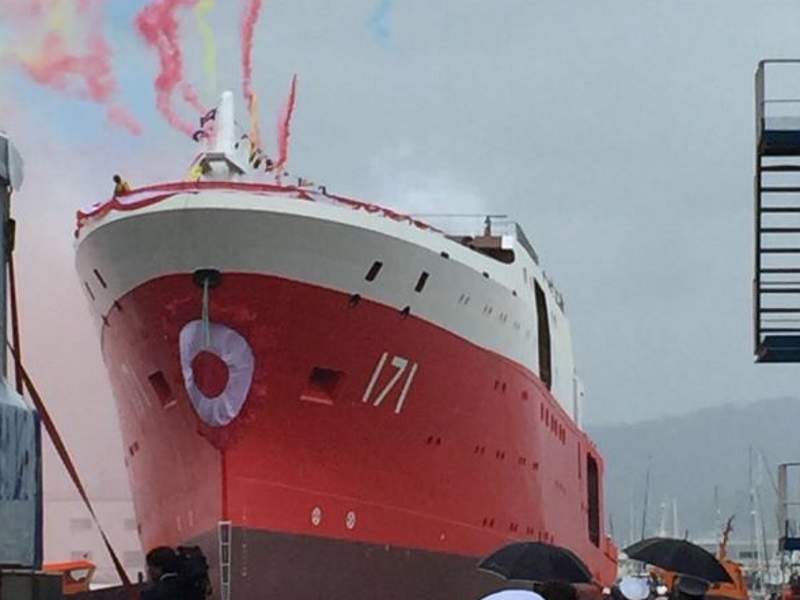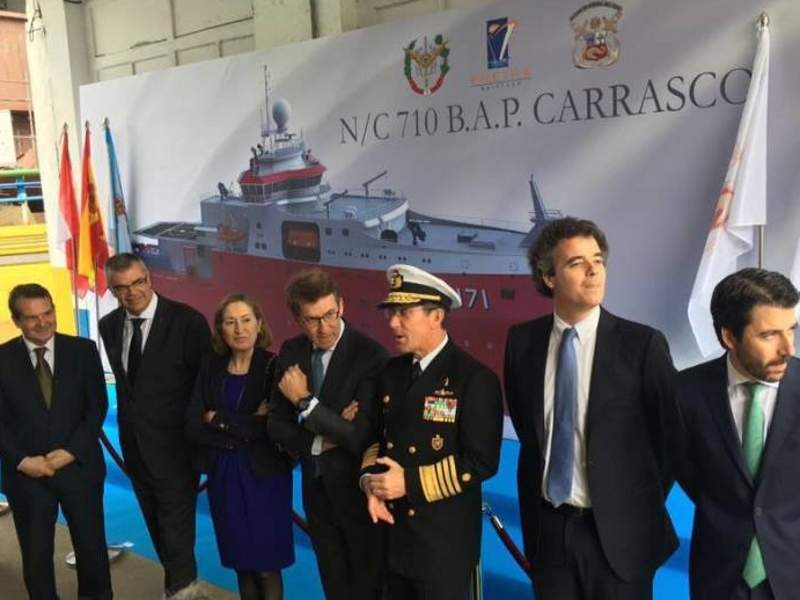The BAP Carrasco (BOP-171) is an oceanographic and polar research vessel built by Spanish shipbuilding company Construcciones Navales P Freire for the Peruvian Navy. The vessel was launched in Vigo, Galicia, Spain, in May 2016.
Designed to perform oceanographic research activities in Peruvian waters in the fields of hydrography, biology, geology, oceanology, geophysics and meteorology, BOP-171 will help Peru strengthen its scientific research capabilities in Antarctica.
In addition to research missions, BAP Carrasco can also be used in rescue, humanitarian and logistics support missions.
BAP Carrasco oceanographic research vessel development details
The Ministry of Defence of Peru awarded a contract to Freire Shipyard in December 2014 to build an oceanographic research vessel for the Peruvian Navy.
GE’s Marine Solutions unit was contracted by Freire Shipyard in April 2016 to supply marine solutions to the vessel.
Kongsberg Maritime, in collaboration with Simrad Spain SI and Robinson Marine Electronics, supplied autonomous underwater vehicles and subsea technology systems for the vessel.
BAP Carrasco vessel details
The 95.3m-long and 18m-wide BAP Carrasco oceanographic research vessel can carry 50 crew members and up to 60 scientists to conduct sampling and inspection of water and the seabed. It is operated and controlled from the enclosed bridge, located amidships.
The vessel is equipped with a hangar and flight deck at the stern to support the operation of one helicopter. It accommodates scientific equipment storage warehouses as well as laboratories for oceanographic and meteorological observations.
GE’s SeaStreamTM Dynamic Positioning (DP) and automation system placed in the bridge provides the vessel operators with enhanced situational awareness.
The computer-controlled SeaStream DP system maintains the vessel’s position by automatically controlling its propellers and thrusters using sensor data.
Sensors and equipment on board BAP Carrasco
The oceanographic and polar research vessel incorporates a variety of sensors to determine temperature, currents, conductivity and multi-beam bathymetry. The antennae placed on the top of the bridge are intended for navigation and communication.
Kongsberg’s HiPAP (high-precision acoustic positioning system) is used to obtain position accuracy in deep waters. It features one transducer, mounted atop the bridge, and one subsea transponder installed on the seabed.
The vessel carries two HUGIN autonomous underwater vehicles, developed by Kongsberg, in hydrographic, geology and geophysics configurations. The vehicles are deployed from the stern of the vessel to conduct surveys at a maximum operating depth of 3km.
The aft section houses a remotely-operated vehicle, which is capable of conducting surveys at a maximum operating depth of 1km.
The vessel is also installed with other Kongsberg’s technologies, including an EM122 deepwater multi-beam echo sounder; EA600 hydrographic single beam echo sounder with frequencies 12kHz, 38kHz and 200kHz; Simrad EK80 single-beam echo sounder with multiple frequencies of 18kHz to 200kHz; and SBP 120 sub-bottom profiler.
BAP Carrasco propulsion
The BAP Carrasco polar research vessel is powered by GE Marine Solutions unit’s low-voltage electric propulsion system, consisting of MV3000 variable frequency drives, generators, anti-vibration motors, and switchboard.
The diesel-electric propulsion system will help attain DNV GL’s Silent-A Class notation for underwater noise emissions while also providing fuel efficiency.
The vessel is also equipped with Rolls Royce azimuth thrusters.
BAP Carrasco polar research vessel performance
The cruising and maximum speeds of the BAP Carrasco research vessel are 12k and 16k, respectively.
With the ability to endure for 51 days, the vessel offers reliable operation with minimal environmental impact in difficult environmental conditions.

